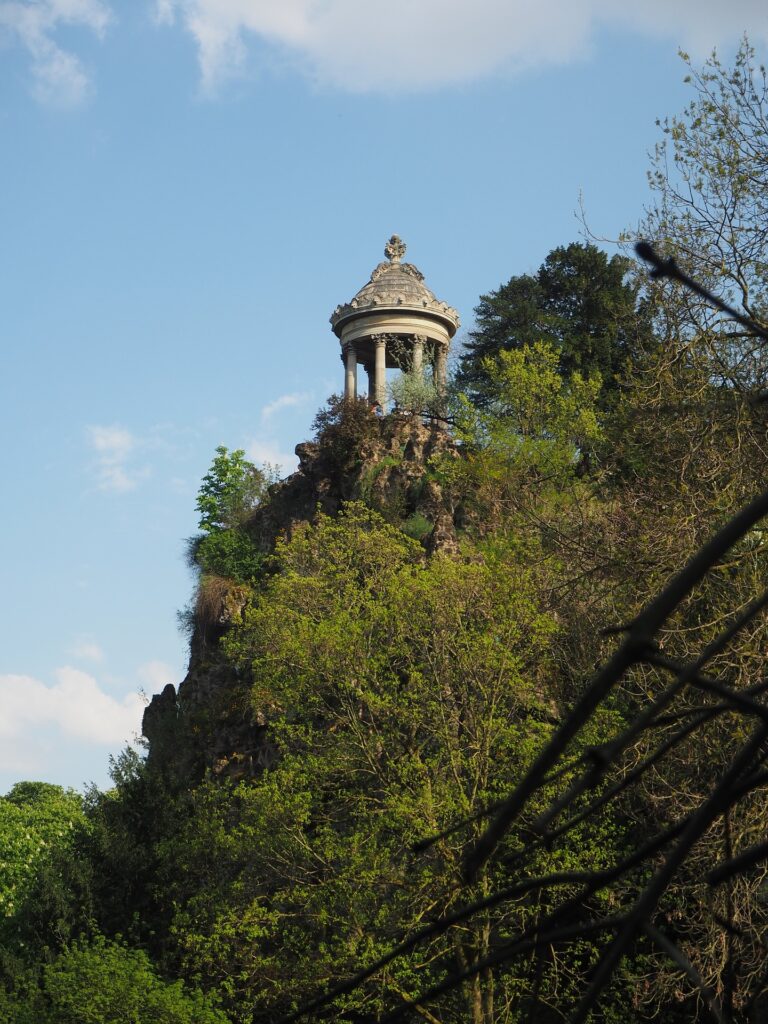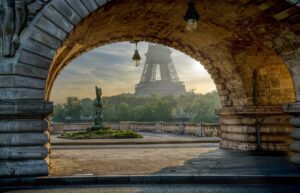Paris is home to a lot of famous parks. The Luxembourg Gardens, the Champ de Mars, the Tuileries Gardens. In fact, there are approximately 480 public parks to choose from in Paris, so you’re never far away from some green space. This past weekend, I went for a walk in one of my favourite parks – the Parc des Buttes Chaumont in the 19th arrondissement. The sun was shining, the sky was blue, and the park was gorgeous. However, it occurred to me that I knew very little about its history, other than it was a great place for a picnic. When I got home, I did a little digging, and boy was I in for a shock.
You see, it turns out the Parc des Buttes Chaumont was not always the beautiful oasis that it is now. In fact, the name “Chaumont” comes from the term “chauve-mont”, meaning bare hill. The luscious grass of today did not always exist, and the land was actually devoid of vegetation for centuries. And it makes sense, given its history.
Centuries of Horror
In the 13th century, the famous Gibbet of Montfaucon was built on the location where I’ve enjoyed many a picnic. This structure stood several stories high, and served as the primary gallows for the Kings of France for centuries. Countless bodies of those who had been executed by the state were hung on display to act as a warning to the citizens of Paris. There were many prominent people who were displayed there over the years, with the most famous being Admiral Gaspard de Coligny. He famously was the first victim of the St. Bartholomew’s Day Massacre, and was reportedly hung by his feet as a final insult.
The Gibbet of Monfaucon was so notorious, it became a favourite subject of artists in the 19th century. Both Victor Hugo and Alexandre Dumas described it in their novels, with the former even mentioning it in The Hunchback of Notre Dame. This was nearly two centuries after the gibbet was finally dismantled in 1760, proving just how infamous it was in its time. After the outbreak of the French Revolution, the site was used as a garbage and sewage dump. And then, just for good measure, it was used as a slaughterhouse for horse carcasses. No wonder the soil was barren.
The Transformation of Paris
The land that is now the 19th and 20th arrondissements was annexed by the city of Paris in 1860. As a result, the population of these neighbourhoods boomed. And for some reason, it was decided that the former location of executions, slaughter, and refuse would be the perfect location for a public park. Architect and designer Jean-Charles Adolphe Alphand was given the arduous task of remodelling the land. Work began in 1864, and on April 1st, 1867, the Parc des Buttes Chaumont was officially opened to the public.
Today, the park has nearly 8km of walking paths with an artificial lake in the middle. And in the centre of that lake, the beautiful Temple de la Sibylle sits 50m in the air, perched atop a manmade island called the Île de la Belvédère. I’ve climbed to the temple many times over the years, and I can assure you, the view from the top is spectacular.
A Hidden Oasis
Due to its location, very few visitors ever make it to the Parc des Buttes Chaumont. But they absolutely should. It is a beautiful oasis of green in the northeast of Paris, complete with cafes, the famous Rosa Bonheur bar, and a children’s theatre. And all this is set among rolling slopes that offer stunning views of the city once you reach the top. I’ve spent countless hours walking, running, and picnicking in this park, but until this weekend, I never knew its history. Now that I do, I’m even more grateful that this park exists. I’m grateful that the city planners of Paris looked at a site of desolation and death, and saw the potential for something beautiful.
Laura Moore is a professional storyteller who loves history and the many stories that make Paris one of the most fascinating cities in the world. Join one of her signature tours to learn the story of a city.




